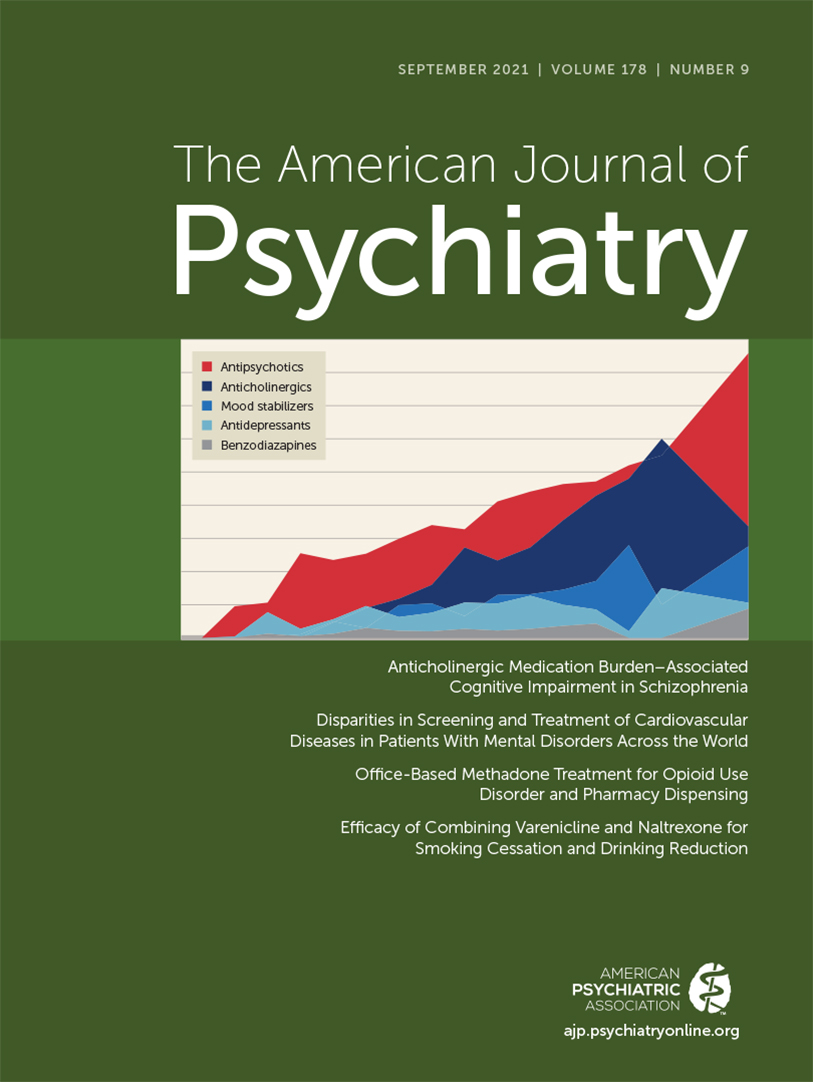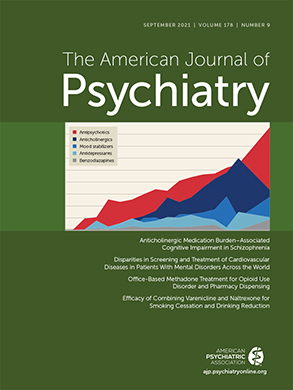Earlier this year, the World Federation of ADHD published an International Consensus Statement containing 208 evidence-based conclusions about the disorder (
1). This Herculean task, led by Stephen Faraone, involved detailed reviewing of large meta-analyses and other large studies (>2,000 participants). In addition to the well-known findings from randomized controlled clinical trials that medications are effective for reducing the symptoms of attention deficit hyperactivity disorder (ADHD), the International Consensus Statement confirms that the evidence base extends to wide-ranging outcomes: “Treatment with ADHD medications reduces accidental injuries, traumatic brain injury, substance abuse, cigarette smoking, educational underachievement, bone fractures, sexually transmitted infections, depression, suicide, criminal activity, and teenage pregnancy.” The empirical evidence further shows that stimulant medications for ADHD are more effective than nonstimulant medications (
1).
Given the efficacy of stimulant treatment for ADHD, the high rates of discontinuation of the treatment, reported across many countries, may seem unexpected (
2–
5). In this issue of the
Journal, Brikell et al. (
6), in a study using data from Denmark, report that 45% of the individuals with ADHD who had received prescriptions for stimulants discontinued taking the medication within 2 years. Benefiting from the remarkable iPSYCH2012 genetic and Danish national register data sets (
7), Brikell et al. set out to investigate what predicts such a high rate of discontinuation, as well as the related outcomes of stimulant treatment initiation and switch to nonstimulant medications. While a small number of past studies have explored predictors such as parental psychiatric diagnosis, age, sex, and socioeconomic status (with varied success), this is the largest study to date and the first study specifically to investigate genetic risk factors relating to these stimulant treatment outcomes.
The utilization of genetic data for such a purpose is timely. A highlight of genetic research on ADHD was the discovery of the first genome-wide significant risk loci for the disorder, published in 2019 (
8). The genome-wide association study (GWAS) meta-analysis of 20,183 individuals with ADHD and 35,191 comparison participants identified genetic variants at 12 loci and has enabled subsequent polygenic risk analyses of ADHD and associated phenotypes. From the GWAS, polygenic risk scores (PRSs) can be derived for each individual, capturing the genetic signal underlying ADHD. The further success in recent genetic research is evident in the reports of shared genetic risks between ADHD and many co-occurring disorders and traits, and of how the clinical diagnosis of ADHD represents the extreme of continuous heritable traits (
1).
In the PRS analyses by Brikell et al., the clearest pattern emerged for association of the bipolar disorder PRS and the schizophrenia PRS with the risk for stimulant treatment discontinuation. The higher the genetic liability for either bipolar disorder or schizophrenia, the more likely were the individuals with ADHD to discontinue stimulant medication. These are novel findings. The study authors suggest that the most plausible explanation is that individuals with a higher genetic liability for bipolar disorder or schizophrenia may have an increased risk for adverse effects of stimulant treatment, pointing to valuable directions for future research. Overall, this possibility emerges as particularly convincing for comorbid bipolar disorder, as the clinical diagnosis was also one of the strongest individual predictors of stimulant discontinuation.
While the observed PRS effect sizes are too modest to be clinically useful, Brikell et al. note that there may be potential in combining PRSs with clinical predictors. The size of the associations was reported as hazard ratios: a hazard ratio of 1 would indicate no association, while a hazard ratio greater than 1 would suggest an increased risk. For most psychiatric comorbidities, the observed hazard ratios for discontinuation were in the range of 1.19 to 1.45, which we can compare with the observed hazard ratios of 1.05 for bipolar disorder PRS and 1.07 for schizophrenia PRS. However, the authors rightly point out that if the predictive power of PRSs can be improved, their potential unique benefit relates to the fact that they can be measured prior to the onset of a disorder and in individuals with elevated but below-diagnostic-threshold symptom levels.
We also need to balance the considerations regarding comorbidities that may increase the risk for stimulant discontinuation with the evidence that emerged regarding factors that are associated with the initial outcome of stimulant initiation. Several of the comorbid psychiatric diagnoses—in particular bipolar disorder, anxiety disorder, and substance use disorder—decreased the likelihood of stimulant treatment initiation, while they increased the risk for discontinuation. These results illustrate how the presence of specific comorbidities had already been a clinical consideration when assessing a patient’s suitability for stimulant treatment.
The negative findings the authors observed in relation to ADHD PRS—the lack of association with any of the stimulant treatment outcomes—may also be informative. Similar results have recently been observed for major depressive disorder: the PRS for depression does not predict response to antidepressants, while the schizophrenia PRS does (
9). This pattern of results provides further support for the possibility, raised also by the authors, that the genetic contribution to disorder risk may be different from the genetic contribution to a treatment response. Whereas the ADHD PRS did not predict the outcomes, a delayed ADHD diagnosis (at age 13 or later) was associated with an increased risk for each of the stimulant medication outcomes; whether this relates to differences in symptom presentation or other characteristics or acceptability of the medication between those with earlier versus later diagnosis requires further study.
The success of the recent GWASs on ADHD and other psychiatric disorders has relied on the very large sample sizes that have become available. While the sample size of 9,133 individuals with ADHD in the Brikell et al. study would be considered impressive for most purposes, it is modest for GWAS. In this light, the limited results emerging from the authors’ additional GWAS on the stimulant medication outcomes—one significant hit for “switch to nonstimulants” but none for the other outcomes—as well as the nonsignificant single-nucleotide polymorphism heritabilities, are best interpreted cautiously.
The contribution of genetic approaches, such as PRS, to science is undisputed. Their potential future clinical utility in predicting clinical outcomes needs careful consideration in relation to absolute risks. A tool developed by Cathryn Lewis and her team (
10) that may be helpful and is now available (
https://opain.shinyapps.io/risk_visualiser) converts PRS values into absolute risks.
The study by Brikell et al. in this issue is important in contributing to and highlighting the importance of advancing the understanding of the common treatment nonadherence among individuals with ADHD. Further research is in progress, including a new European Commission–funded 5-year collaborative project in which we will use remote measurement technology to obtain real-world data from the daily life of adults with ADHD in relation to adherence to pharmacological treatment and its predictors and correlates, over a monitoring period of 12 months that starts before treatment initiation (
11). We aim to identify potential reasons for nonadherence, with a focus on side effects, lack of treatment response, presence of comorbidities, and poor adherence behaviors. A recent open-label study by Biederman et al. (
12) illustrated how a straightforward digital health intervention, in the form of text messages to participants with ADHD reminding them to take their medication, can lead to a significant improvement in engagement with stimulant treatment. Further remote technology intervention approaches to optimize treatment adherence will likely be tested in the coming years.

